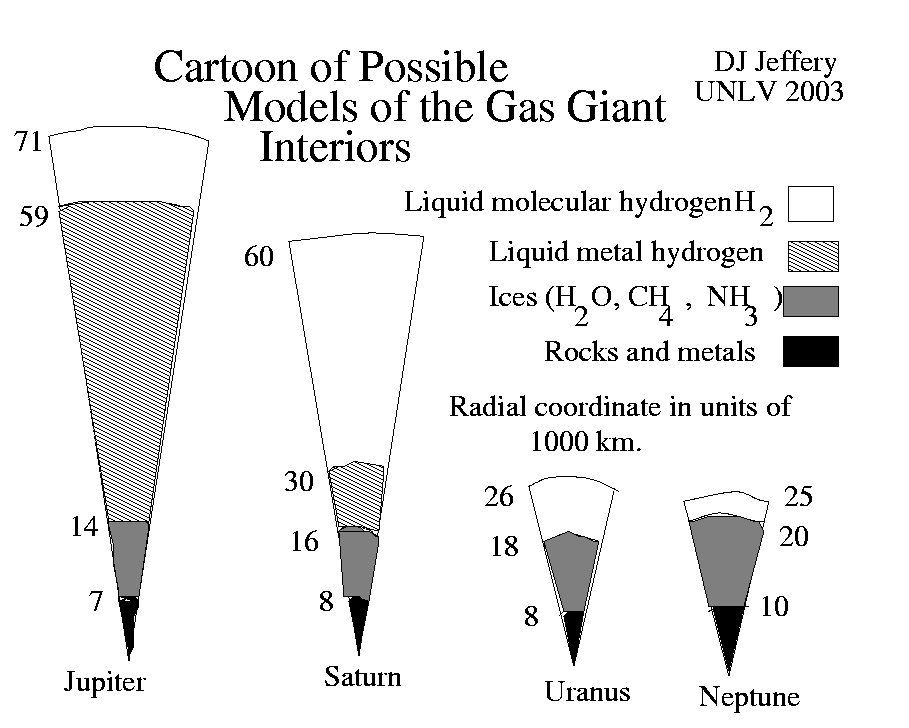
Image 1 Caption: Modeled interiors of the Solar System gas giants: Jupiter ♃ (Wikipedia: Jupiter: Internal structure), Saturn ♄ (Wikipedia: Saturn: Internal structure), Uranus ⛢,♅ (Wikipedia: Uranus: Internal structure), and Neptune ♆ (Wikipedia: Neptune: Internal structure).
Note Uranus and Neptune since the circa 1978 have usually been classified or sub-classified as ice giants (Wikipedia: Ice giant: Terminology).
The gas giants and, for comparison, Earth are show to-scale.
Features of the models shown in the images:
- Obviously, we do NOT have as much information about the interiors of
the gas giants as we do about the
rocky planets.
But knowing size, density, and probable composition, plus modeling, we have reasonably good models of the interiors (FMW-216, HI-207).
But note Image 1 above and Image 2 below represent the understanding of the interiors circa 2003 and the two images are NOT completely consistent. There have been developments since then, but the main features of the models have probably NOT changed significantly.
- Note that we only show the dominant
substances in each layer of the
models.
The stratification of helium is
NOT shown and may be a bit uncertain.
The substances shown in the images or known to be significant are: molecular hydrogen (H2), liquid metallic hydrogen (H), helium (He), ices (water ice (H2O), methane (CH4), maybe methane clathrate (CH4•5.75H2O or 4CH4•23H2O), ammonia (NH3)), rock, iron (Fe, Z=26).
- The stratification of the interiors is due to
chemical differentiation
The denser the substance,
the deeper it has sunk on average.
However, recall chemical differentiation is NOT perfect.
- The deep
ices,
rock,
and
metal (NOT used in the sense of
astrophysical metal)
are in a far different state than
anything we know on the surface of the
Earth because of the
high pressure in the deep interior.
For example, the density and pressure at Jupiter's center are estimated, respectively, to be 31 g/cm**3 and 100 million atm (i.e., 100 million times the Earth atmosphere surface pressure).
Note 1 standard atmosphere (atm) = 101325 Pa exactly ≅ 10**5 Pa = 100 kPa = 0.1 MPa).
Note also, it takes a lot of pressure to squeeze iron (Fe, Z=26) (probably the dominant center element) to 31 g/cm**3. Uncompressed iron has density of about 8 g/cm**3 recall.
- Liquid metallic hydrogen is a
theoretical expectation for
hydrogen at
pressures of over ∼ 400 GPa (∼ 3,900,000
atmospheres)
(Wikipedia:
Metallic hydrogen: Hydrogen under pressure).
In liquid metallic hydrogen, the hydrogen electrons become unbound from the protons and become free electrons and the substance is a metal in the ordinary sense which is NOT in the sense of an astrophysical metal.
Liquid metallic hydrogen is actually theoretical entity since experimentally it has NOT been created definitively (Wikipedia: Metallic hydrogen: Experimental pursuit).
However, for the interiors of large gas giants, there seems to be NO widely considered alternative.
Note whether liquid metallic hydrogen exists in Uranus and Neptune may be uncertain. Circa 2024, the consensus is they do NOT (Wikipedia: Uranus: Internal structure; Wikipedia: Neptune: Internal structure). Both Image 1 and Image 2 show none.
- Only the icy/rocky/metallic cores are solids.
So the "solid surface" of
the gas giants is a long way down.
- The atmospheres are dominated by
molecular hydrogen (H_2)
gas.
As you go down from the top of the atmospheres, density and pressure rise and the molecular hydrogen (H_2) gradually becomes dense enough to be generally considered a liquid---there is NO phase transition: i.e., NO interface between gas and liquid.
The distinction between gas and liquid vanishes at the high temperatures and pressures such as one finds inside the gas giants (Se-497).
The upper region of a gas giant which is clearly gas (i.e., the atmosphere) is a very thin film???.
Probably because there is NO phase transition, the location of the transition from atmosphere to interior is a matter of definition and probably varies among researchers (e.g., Wikipedia: Atmosphere of Jupiter: Vertical structure).
Jupiter's atmosphere, for example, is defined to be ∼ 1000 km deep (Wikipedia: Atmosphere of Jupiter: Vertical structure). Note Jupiter's radius is ∼ 71,000 km and so Jupiter's atmosphere defined thickness is only ∼ 1.4 % of Jupiter's radius.
- The fluids
(i.e., gases and
liquids) in the
gas giants are convecting heat.
Thus there are convection cells
inside the gas giants.
But their behavior is probably NOT too well understood???.
- The gas giants have
dipole magnetic fields.
The dipole magnetic fields of Jupiter and Saturn probably arise from electrical currents in the liquid metallic hydrogen layer.
For Uranus and Neptune the situation is NOT so clear.
- Jupiter's magnetic field
(i.e., its magnetosphere)
is the strongest planetary
magnetic field
in the Solar System
(SRJ-216).
Jupiter's magnetosphere gives rise to some very interesting behavior like strong auroras on Jupiter, but we will NOT go into detail on that subject here.
- Image 2 Caption: A cartoon of
models for the
gas giant interiors.
The cartoon models are nearly the same as the models shown in Image 1.
-
Images:
- Credit/Permission: NASA,
2003
(uploaded to
Wikimedia Commons
by User:RHorning,
2005) /
Public domain.
Image link: Wikimedia Commons: File:Gas Giant Interiors.jpg.
- Credit/Permission: ©
David Jeffery,
2003 / Own work.
Image link: Itself.
File: Planetary systems file: gas_giant_interior.html.
